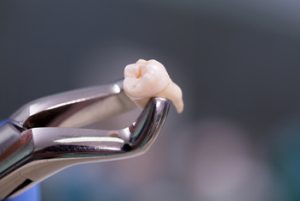Planning air travel around a dental procedure like a tooth extraction can feel uncertain. From potential pain in flight to delayed healing, the risks might not be immediately obvious. Questions around safety, comfort, and timing often arise, especially for patients facing international flights or work-related travel. So, can you fly after tooth extraction without disrupting your recovery? Knowing the right timing and how to manage your care while travelling is key to protecting your oral health and preventing complications.
Why Timing Matters After Tooth Extraction Before Flying
Flying shortly after dental work isn’t always ideal. Understanding how timing affects recovery helps minimise complications and discomfort while airborne.
How Cabin Pressure Interacts With Healing Tissues

The Added Risks After a Surgical Extraction
A surgical extraction involves more trauma to the tissues than a standard procedure, requiring more healing time. Deep incisions, stitches, and bone involvement mean swelling and discomfort may linger for several days. Travelling too early may worsen swelling or discomfort caused by trapped air pockets near surgical sites. Dentists recommend waiting until the inflammation reduces before boarding, especially when wisdom teeth or upper molars are involved. Surgical sites are also more prone to complications triggered by cabin conditions.
Understanding Sinus Pressure After Upper Tooth Removal
Removing an upper tooth can place strain on the sinus region. Because these teeth are near the sinus floor, any disturbance to surrounding tissues may lead to sinus pressure or discomfort when airborne. This sensation may feel like a dull ache, fullness, or sharp tooth pain, even though the tooth has already been extracted. The risk increases during landing and takeoff when pressure changes are most significant. When the sinus lining is compromised, changes in altitude may trigger extended discomfort.
How to Tell If You’re Ready to Travel After Tooth Removal
Before confirming your flight, evaluate how your mouth feels during normal daily activities. Can you speak, eat, and brush comfortably without sharp pain? Does lying flat or moving around increase swelling or pressure? If you’re still reaching for pain relief every few hours or feel tenderness while chewing soft foods, your recovery may still be in progress. Also, consider whether you can go without your pain medication for a few hours, as this may reflect how you’ll manage during a flight. These simple self-checks give a clearer sense of your healing progress than the date of extraction alone.
What Happens If You Fly Too Soon After a Tooth Extraction?
Jumping on a flight before your mouth has healed can lead to more than just discomfort. Several potential complications may affect both your journey and recovery.
The Risk of Developing Dry Socket Mid-Flight
A dry socket is one of the most painful complications of tooth extractions, occurring when the blood clot becomes dislodged or fails to form. Once exposed, the bone and nerve beneath the extraction site are left unprotected. This condition causes throbbing pain that radiates to the jaw and ear and often requires emergency oral medicine. The reduced pressure in cabins can increase the chance of clot dislodgement within the early healing window. Managing this pain without access to your dentist can be extremely difficult while travelling.
Why Increased Bleeding Can Occur In-Flight
Changes in air pressure may lead to increased bleeding, especially if the clot hasn’t properly sealed the extraction site. Dry cabin air may irritate gum tissue and compromise clot formation. If you’re still in the early stages of healing, even mild pressure changes can reopen wounds or prevent full closure. This is particularly risky during long-haul flights. To reduce this risk, your dentist may advise waiting until the extraction site shows signs of full closure.
Signs That Suggest You Should Postpone Travel
Experiencing symptoms like swelling, ongoing bleeding, or significant pain means you’re not yet fit to fly. Some patients also require strong pain medication that may impair judgement or cause drowsiness during travel. If you notice delayed healing, foul taste, or sensitivity when touching the area, these may point to potential complications. Giving your body a few extra days to heal may prevent complications that require attention while overseas.
The Compounded Risks for Flight Attendants or Frequent Flyers
If you’re a flight attendant or travel regularly, aviation dentistry becomes particularly relevant. Repeated exposure to cabin pressure during recovery may lead to setbacks or prolonged symptoms. In such cases, dental treatments should be scheduled during periods of extended ground time. Let your dental practitioner know about your occupation in advance so they can tailor recovery guidelines accordingly. Some may suggest extended healing time or more thorough follow-up before returning to work.
Practical Tips to Manage Travel After Tooth Extraction
If travel cannot be avoided, planning your journey carefully can reduce discomfort and help maintain healing while airborne.
Take Appropriate Precautions Before Boarding
Start by discussing your itinerary with your dentist, who can evaluate the condition of your extraction site and offer personalised advice. They might provide guidelines for hot drinks, acidic foods, and other triggers that should be avoided. For those needing to travel sooner, ask about suitable pain medication and cold compress applications. It’s also wise to carry emergency contact details and follow the dentist’s instructions for post-care throughout your trip. Being prepared helps minimise disruptions during your recovery.
Protect the Extraction Site With the Right Tools
Simple items like a travel pillow can make a significant difference in how your body responds during the flight. Maintaining an upright posture can ease inflammation and discourage fluid build-up near the site. Avoid pressing your head against windows or leaning to one side if that aligns with the side of your tooth removal. If you experience discomfort mid-flight, discreetly apply a cold compress using a cloth and a sealed ice pack obtained from cabin staff.
Stick to Soft Foods and Stay Hydrated
Bringing soft foods like mashed vegetables, yoghurt, or smoothies on board can help maintain nourishment without straining the mouth. Avoid chewing on the side where the tooth was removed, and steer clear of foods that are spicy, crunchy, or too hot. Staying hydrated with cool water also keeps oral tissues calm and reduces inflammation. Avoid alcohol or caffeinated drinks, as they may increase the risk of bleeding or dry out the gums. Preparing your meals in advance can make your travel more manageable.
Maintain Oral Hygiene Without Disturbing the Site
Good oral hygiene remains essential while travelling, even during recovery. Pack a soft-bristled toothbrush, salt sachets for gentle rinses, and any recommended oral products. Avoid vigorous rinsing, which can disturb blood clots and prolong healing. Use gentle swishing motions if needed, and rinse only when instructed. Keep meals clean and free from lingering food particles that could irritate the wound or cause infection. Clean your mouth after eating, but do so gently to avoid disrupting the clot.
Know When It’s Too Soon to Travel and What to Do Instead
Understanding the limits of your recovery allows you to make smarter decisions around your upcoming journey.
 Warning Signs That Signal the Need to Wait
Warning Signs That Signal the Need to Wait
If you’re still managing severe pain, swelling, or discharge from the site, it’s likely unsafe to board. Persistent bleeding, especially when paired with discomfort, may mean the blood clot isn’t stabilised. Delaying travel until your mouth shows signs of steady improvement ensures a more comfortable and safer trip. If you notice any increase in symptoms with movement or elevation, this might also signal that your healing hasn’t progressed enough. It’s better to adjust your itinerary than risk complications mid-flight.
Recognising Dental Implications Beyond Oral Pain
Sometimes, dental issues go beyond the mouth. For instance, complications like dry socket or infection may cause low-grade fever, fatigue, or jaw stiffness. Sinus pressure from upper teeth can also trigger headaches or discomfort across the face. These signs suggest deeper dental implications that require medical review. If symptoms spread or become systemic, it is not advisable to board a flight. Instead, seek care from a dental professional who can determine whether it’s safe to travel.
What Dentists Recommend If Travel Is Inevitable
If you absolutely must fly, dentists recommend being as prepared as possible. Take pain medication on schedule, avoid excessive talking or chewing, and keep emergency contacts on hand. Choose an aisle seat for easier movement and access to cold compresses if needed. Eat before your flight to avoid in-flight chewing, and bring suitable snacks in case hunger strikes later. Follow every bit of your dental care provider’s guidance, particularly around medications and in-flight behaviour.
Let a Dental Professional Guide Your Timeline
Your dentist understands your treatment, healing process, and personal recovery speed. Whether you had a simple extraction or more complex wisdom tooth extractions, their recommendations should be your final word before flying. They will assess your oral health, the extraction site condition, and any signs of potential complications. A follow-up visit, even just for a quick check, helps confirm your readiness to fly. Let them know your timeline in advance, so appropriate precautions can be built into your recovery. Open communication also allows your dentist to adjust pain management strategies if needed. If swelling, discomfort, or sinus pressure is still present, delaying your trip may be the safer choice.
Prioritise Comfort and Safety Before Boarding Your Next Flight

Illawong: (02) 9158 6756
Sylvania Waters: (02) 9159 6083
Pyrmont: (02) 9158 6213
Note: Any surgical or invasive procedure carries risks. Before proceeding, you should seek a second opinion from an appropriately qualified health practitioner.
References
https://www.dentalhealth.org/what-to-do-following-an-extraction
https://www.webmd.com/oral-health/pulling-a-tooth-tooth-extraction


 Warning Signs That Signal the Need to Wait
Warning Signs That Signal the Need to Wait


